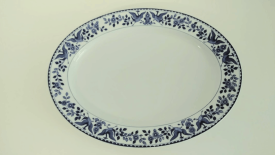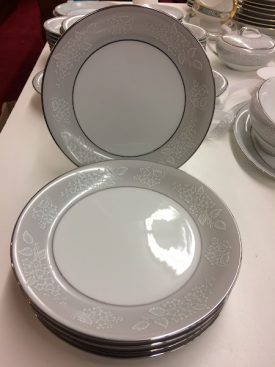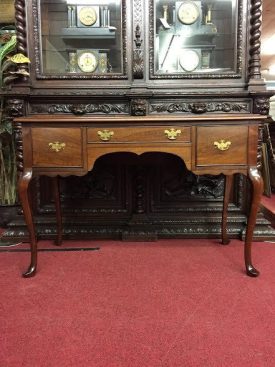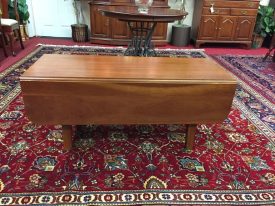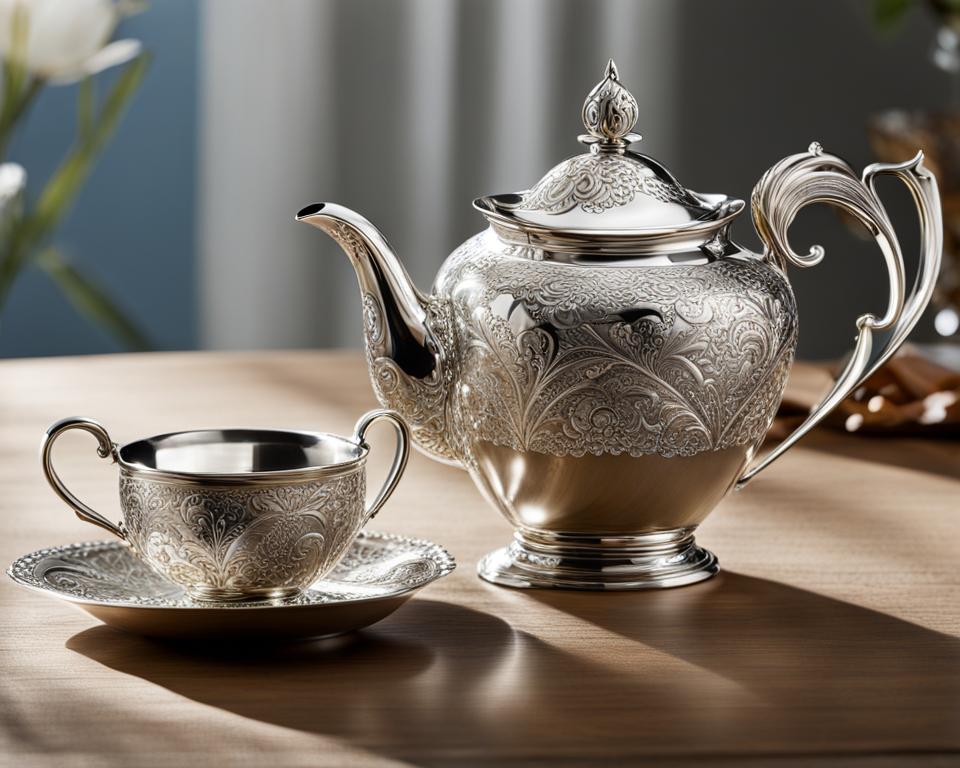Vintage decor has a profound impact on our psychology and emotional well-being. It has the power to transport us back in time, evoking feelings of nostalgia and creating a strong emotional connection. The psychology of vintage decor goes beyond aesthetics, as studies have shown that different colors used in vintage decor can have specific psychological effects on our mood and behavior. By understanding the psychological impact of vintage decor, we can harness its benefits to promote mental health and well-being.

Key Takeaways:
- Vintage decor evokes nostalgia and creates a strong emotional connection.
- Colors used in vintage decor have specific psychological effects on our mood and behavior.
- Understanding the psychology of vintage decor can promote mental health and well-being.
- Vintage decor provides an opportunity to tap into the power of nostalgia and create visually appealing environments.
- By incorporating vintage elements into design, designers can create spaces that resonate with users’ memories and emotions.
The Influence of Retro Door Colors on Psychology
Retro door colors have a significant influence on our psychology and mood. Each color evokes different emotions and feelings. Understanding the psychology behind these vibrant hues can help create a desired atmosphere and ambiance in a space.
Psychological Effects of Retro Door Colors
- Red doors: Red is a powerful color that creates a sense of energy, passion, and excitement. It can evoke strong emotions and draw attention.
- Yellow doors: Yellow is associated with happiness, optimism, and cheerfulness. It can create a welcoming and uplifting atmosphere.
- Blue doors: Blue is known for its calming and tranquil effects. It can promote relaxation and a sense of peace.
- Green doors: Green symbolizes renewal, growth, and vitality. It can create a refreshing and rejuvenating environment.
- Orange doors: Orange is a vibrant color that evokes enthusiasm, warmth, and creativity. It can add a lively and energetic touch to a space.
The choice of retro door color can greatly impact the psychology and mood of individuals within a space. Whether it’s a bold red to create a sense of energy in a restaurant or a calming blue for a bedroom, retro door colors play a crucial role in influencing our emotional responses.
These colors can be used strategically to create specific atmospheres and evoke desired emotions in various settings. Designers, homeowners, and businesses can take advantage of the psychological impact of retro door colors to create visually appealing spaces that uplift, relax, or inspire.
“The colors we choose for our doors can have a profound impact on the overall ambiance and mood of a space. By understanding the psychological effects of retro door colors, we can create environments that align with the desired emotions and experiences we want to evoke.”
The Powerful Connection: Nostalgia and Retro Door Colors
Nostalgia and retro door colors share a powerful connection that goes beyond mere aesthetics. Inspired by bygone eras, retro door colors tap into our sentimental attachment to the past, evoking a sense of warmth, comfort, and familiarity. This nostalgic appeal resonates deeply with homeowners, allowing them to infuse their spaces with unique personality and charm. Retro door colors possess a timeless appeal that effortlessly merges the best of the past and present, creating visually pleasing and emotionally satisfying environments.
By incorporating retro door colors into their homes, individuals can establish a strong connection with the past, embracing the sentimentality and comfort that nostalgia brings. These vibrant hues harken back to cherished memories and evoke a sense of appreciation for a bygone era. Whether it’s a vibrant red door reminiscent of mid-century flair or a soft pastel blue door reminiscent of coastal cottages, retro door colors have the power to transport us back to a time when life seemed simpler and more carefree.
“Retro door colors are like portals to the past, inviting us to revisit cherished memories and bask in the sentimentality of bygone eras.”
Moreover, retro door colors contribute to the overall appeal of a space, creating an inviting atmosphere that resonates with both homeowners and visitors. These colors inject personality and character into a home, making it stand out from the cookie-cutter designs of modern times. Whether it’s a striking yellow door that exudes cheerfulness or a rich green door that symbolizes renewal and vitality, retro door colors add a touch of nostalgia and individuality to any home.
Furthermore, the connection between nostalgia and retro door colors extends beyond personal sentimentality. These colors have a universal appeal and evoke emotions that transcend individual experiences. They have the power to evoke a collective nostalgia, reminding us of shared cultural experiences and historical periods. Retro door colors can form a common ground, sparking conversations and creating a sense of community.
The Appeal of Retro Door Colors
The appeal of retro door colors lies in their ability to transport us to simpler times, stirring up cherished memories and unlocking a sense of sentimentality. The visual impact of these colors enhances the overall aesthetic of a space, infusing it with character and charm. Whether it’s the bold red of a retro fire engine or the soft pink of a 1950s-inspired ice cream parlor, retro door colors captivate our attention and create a lasting impression.
The sentimentality associated with retro door colors also stems from their connection to specific eras and design movements. Each color represents a unique time period, carrying with it the essence and style of that era. For example, retro pastel colors bring to mind the iconic aesthetic of the 1950s, while bold primary colors evoke the vibrancy and energy of the 1980s.
Retro door colors not only provide aesthetic appeal but also serve as a conversation starter and an opportunity for self-expression. Homeowners who opt for retro door colors make a bold statement about their individuality and style preferences. By choosing a color that resonates with their personal nostalgia, they create a space that reflects their unique personality.
| Retro Door Color | Meaning and Symbolism |
|---|---|
| Red | Symbolizes energy, passion, and vitality. Creates a focal point and adds drama to the overall exterior aesthetic. |
| Yellow | Represents cheerfulness, optimism, and warmth. Creates a welcoming atmosphere and brightens up the facade. |
| Blue | Elicits a sense of calmness, tranquility, and serenity. Creates a relaxing environment and enhances the overall curb appeal. |
| Green | Symbolizes nature, growth, and harmony. Adds a touch of freshness and vitality to the exterior design. |
| Orange | Evokes enthusiasm, warmth, and vibrancy. Makes a bold statement and adds a pop of color to the overall facade. |
Unlocking Memories: The Role of Retro Door Colors in Sentimentality
Retro door colors have a unique ability to unlock cherished memories and evoke a deep sense of sentimentality. When we encounter these colors, they transport us back to cherished moments from our past, triggering a flood of positive emotions and nostalgia. The psychological impact of retro door colors is powerful, as they tap into our personal histories and nurture a strong emotional connection to our homes.
As we gaze upon a retro door in a vibrant hue, memories of laughter-filled gatherings, cozy family evenings, and heartwarming conversations come rushing back. These colors remind us of the experiences we cherish, the people we love, and the sense of belonging we feel within the walls of our home.
“The colors of the doors vividly bring to mind the sights and feelings from the past. They inspire a wave of sentimentality that envelopes us, creating a reassuring and nostalgic ambiance.”
This psychological impact is due to the close association between color and memory. Various studies have shown that color can evoke specific emotions and trigger memory recall. Retro door colors, with their historical significance and inherent connection to bygone eras, activate the pathways to our past experiences.
By incorporating retro door colors into our homes, we create an environment that fosters a warm and inviting atmosphere. The nostalgia they evoke resonates deeply, offering a sanctuary that reflects our memories and emotions. Whether it’s a vibrant red door that reminds us of childhood playfulness, a soothing blue door that transports us to peaceful moments by the ocean, or an earthy green door that symbolizes the embrace of nature, each color choice carries the potential to unlock treasured memories and reinforce our sentimental attachment to our living spaces.
Ultimately, retro door colors not only add visual appeal to our homes but also have a profound psychological impact. They help us express our unique personality, embrace the past, and create an environment that nurtures our well-being and emotional connection to the spaces we call home.
“The combination of striking door colors and nostalgic memories creates a truly enchanting atmosphere, inviting us to embark on a journey through time and relish the warmth of sentimentality.”
As we explore the intricate interplay between color and memory, it becomes evident that retro door colors have the power to unlock a treasure trove of emotions. They allow us to embrace our memories, celebrate our personal histories, and infuse our homes with a deep sense of sentimentality and belonging.
The Power of Colors
Colors have a profound effect on our moods and emotions. They can influence how we feel, think, and behave. The psychology of colors is a fascinating field that explores the impact of different colors on our mental state. In the context of nostalgia, certain colors hold a special significance and are often referred to as nostalgic colors.
Nostalgic colors have the unique ability to transport us back in time and evoke feelings of nostalgia. These colors can bring back memories of specific eras, cultural moments, or personal experiences, making us feel connected to the past. Vibrant reds, for example, can remind us of old diners and classic cars, while soothing blues can transport us to peaceful summer days by the ocean.
“Nostalgic colors have a way of triggering powerful emotions and creating a sense of familiarity and comfort.” – Dr. Emily Thompson, Color Psychologist
When it comes to creating nostalgic environments, a careful selection of colors can play a significant role. Each color has its own psychological associations and can elicit specific emotions. By understanding the psychology behind colors, designers and decorators can harness their power to create spaces that evoke positive emotions and enhance the sense of nostalgia.
The Psychological Impact of Nostalgic Colors
| Color | Psychological Associations |
|---|---|
| Vibrant Reds | Energetic, passionate, reminiscent of classic cars and diners |
| Soothing Blues | Calm, peaceful, reminiscent of the ocean or blue skies |
| Cheery Yellows | Optimistic, joyful, reminiscent of sunny days and cheerful moments |
| Earthy Greens | Fresh, natural, reminiscent of nature and vintage botanical prints |
These nostalgic colors have the power to transform a space and create a strong emotional connection. Whether it’s through vintage-inspired home decor, retro design elements, or a carefully chosen color palette, designers can tap into the psychology of colors to recreate the ambiance of a bygone era and evoke feelings of nostalgia.

By embracing the power of colors and incorporating nostalgic tones into our spaces, we can create environments that evoke positive emotions and a deep sense of nostalgia. Whether it’s a cozy living room reminiscent of a retro lounge or a vibrant kitchen that transports us to a mid-century diner, the right choice of colors can take us on a journey through time and bring back cherished memories.
The Science Behind Nostalgia
Nostalgia, a powerful emotion deeply ingrained in human psychology, has been extensively studied within the field of psychology. It fuels a profound emotional connection to the past, offering a range of psychological benefits. The act of nostalgic reminiscing triggers feelings of social connectedness, optimism, and self-esteem, counteracting loneliness and fostering a sense of protection and love.
When designers tap into the power of nostalgia, they have the opportunity to create products that foster positive emotional connections with users. By understanding the science behind nostalgia, designers can craft experiences that resonate deeply with individuals, capturing their attention and eliciting strong emotional responses.
“Nostalgia is a powerful and universal emotion that can profoundly impact our thoughts, feelings, and behaviors,” says Dr. Sarah Johnson, a leading researcher in the field of psychology. “By leveraging nostalgia in design, we can create products that tap into our deep emotional connections to the past and evoke a sense of comfort and familiarity.”
Research has shown that nostalgic experiences have a direct impact on our psychological well-being. They allow us to reframe our memories, emphasizing positive aspects and elevating our overall mood. Nostalgia also provides a sense of continuity and stability in a rapidly changing world, offering solace and a comforting reminder of simpler times.
The Power of Emotional Connections
Emotional connections play a significant role in our decision-making processes and brand loyalty. By orchestrating nostalgic experiences, designers can tap into these emotional connections, fostering a deep bond between users and their products. The use of familiar design elements and visual cues from the past can create immediate emotional responses, evoking feelings of joy, comfort, and trust.
| Nostalgic Design Element | Emotional Response |
|---|---|
| Vintage typography | Evokes a sense of nostalgia for the craftsmanship of a bygone era |
| Retro color palettes | Creates a visually appealing and emotionally satisfying aesthetic |
| Graphics inspired by specific eras | Transport users back to a time that holds personal significance |
By leveraging these nostalgic design elements, designers can establish a deep emotional connection with users, resulting in increased engagement, brand loyalty, and customer satisfaction.
Nostalgia is a powerful tool that resonates with individuals on a deeply emotional level. By incorporating nostalgic elements into design, designers have the ability to create products that not only captivate users visually but also forge meaningful connections that evoke positive emotions and enhance the overall user experience.
Applying Nostalgia to Design
Nostalgia holds a significant influence on design, allowing designers to create meaningful and engaging user experiences. By tapping into users’ emotional connections to the past, designers can evoke a sense of familiarity and create a deep bond with their audience. There are various ways to apply nostalgia to design, including through nostalgic aesthetics and interactions. Let’s explore these approaches and their impact on user experience.
Nostalgic Aesthetics
One approach to applying nostalgia to design is through nostalgic aesthetics. By using visual elements reminiscent of the past, designers can evoke a sense of nostalgia and create an emotional connection with users. This can include vintage typography, retro color palettes, and graphics inspired by bygone eras. These design elements transport users back in time, triggering memories and emotions associated with specific periods. The use of nostalgic aesthetics adds depth, personality, and a touch of nostalgia to the overall user experience.

Image: A design inspired by vintage aesthetics, evoking nostalgia in users.
Nostalgic Interactions
Another approach to incorporating nostalgia into design is through nostalgic interactions. Designers can create tactile experiences or integrate sound effects that mimic old mechanical devices. These interactions evoke a sense of familiarity and harken back to simpler times. Tactile experiences, such as the click of a typewriter key or the sound of a rotary phone dial, can transport users to a bygone era, activating their nostalgic memories. By embracing these nostalgic interactions, designers provide an immersive user experience that taps into users’ emotional connections with the past.
“Designers can create user experiences that tap into users’ emotional connections to the past.”
Applying nostalgia to design enhances the overall user experience by providing a sense of comfort, familiarity, and emotional resonance. It creates a connection between the user and the design, making the experience more immersive and memorable. Whether through nostalgic aesthetics or interactions, designers have the power to tap into users’ emotional connections to the past and create designs that resonate deeply with their audience.
Examples of Nostalgic Design Elements
| Design Element | Description |
|---|---|
| Vintage Typography | Using typography inspired by old signage or retro fonts to evoke a sense of nostalgia. |
| Retro Color Palettes | Integrating color schemes popular in past decades, such as muted pastels or bold neon shades. |
| Graphics from Bygone Eras | Incorporating illustrations or imagery reminiscent of different historical periods to evoke nostalgia. |
| Tactile Interactions | Designing user interactions that mimic the feel of operating old devices, like turning a physical knob or pressing typewriter-style keys. |
| Sound Effects | Implementing audio cues, such as the crackle of vinyl or the ring of a classic telephone, to immerse users in a nostalgic experience. |
Table: Examples of nostalgic design elements and their impact on user experience.
Incorporating Nostalgia Into Your Own Designs
When it comes to design, incorporating nostalgia can be a powerful way to connect with your audience on an emotional level. By tapping into their past experiences and memories, you can create designs that evoke a sense of familiarity and comfort. However, it’s essential to approach this carefully and thoughtfully to ensure that your nostalgic features resonate with your target audience.
To effectively incorporate nostalgia into your designs, it’s crucial to understand your audience and their nostalgic triggers. Conduct research to identify the specific visuals, sounds, and interactions that resonate with them and remind them of their past experiences. By catering to their nostalgic preferences, you can create a more meaningful and engaging experience for your users.
Testing and iterating are key aspects of implementing nostalgia into your designs. Once you have identified nostalgic elements to include, it’s important to gather feedback from your audience and make necessary adjustments based on their responses. This iterative process allows you to fine-tune your design and ensure that it effectively creates the emotional connections you desire.
Testing and Iterating Example:
Let’s say you’re designing a mobile app for a clothing brand that wants to evoke a sense of nostalgia in their users. Your target audience consists of young adults who grew up in the 90s, so you decide to incorporate vintage typography and a color palette that reflects the vibrant hues of that era.
During the testing phase, you gather feedback from your target audience to understand their emotional reactions to the design. You find that the vintage typography triggers their nostalgic memories, but the color palette isn’t resonating as strongly. Through iterative testing, you experiment with different color combinations that still evoke nostalgia while aligning with your audience’s preferences. By incorporating their feedback, you create a design that effectively taps into their emotional connections.
“Incorporating nostalgia into designs helps establish emotional connections with users and creates a sense of familiarity and comfort.”
It’s important to strike a balance between nostalgia and innovation in your designs. While nostalgia can create powerful emotional connections, relying too heavily on the past can hinder progress and limit your creativity. It’s essential to infuse a fresh perspective and innovative elements into your designs to keep them relevant and appealing to your audience.
By effectively incorporating nostalgia into your designs, you can create meaningful connections with your audience and foster a sense of emotional attachment. Understanding your target audience, testing and iterating on nostalgic features, and finding the right balance between nostalgia and innovation are key steps in crafting designs that resonate on an emotional level.
Table: Examples of Nostalgic Design Elements
| Nostalgic Design Element | Description |
|---|---|
| Vintage Typography | Use retro fonts and typefaces reminiscent of different eras to evoke nostalgia and create a vintage feel. |
| Retro Color Palette | Incorporate color schemes inspired by specific time periods to create a nostalgic ambiance and trigger memories. |
| Iconic Symbols | Integrate iconic symbols or imagery from the past that resonate with your target audience and evoke nostalgic emotions. |
| Old-School Interactions | Include interactive elements that mimic old mechanical devices or user interfaces to transport users back to the past. |
Conclusion
The psychology of vintage decor offers a powerful means of creating an emotional connection with users. By incorporating retro door colors and nostalgic design elements, designers have the ability to evoke feelings of nostalgia and sentimentality in their audience. Through a deep understanding of the psychology behind vintage decor, spaces can be curated to promote emotional well-being, warmth, and comfort.
Vintage decor provides a unique opportunity to tap into the power of nostalgia and create visually appealing environments that resonate with users’ memories and emotions. The choice of retro door colors and design elements can elicit a strong emotional response, triggering positive and comforting associations with the past.
When vintage decor is thoughtfully utilized, it can enable a sense of connection and familiarity. By evoking nostalgia and embracing elements from bygone eras, designers can foster an emotional bond with their audience. This connection not only adds character and depth to spaces, but also promotes a sense of joy and well-being.
Incorporating the psychology of vintage decor into design brings together aesthetics and emotional connections. By creating spaces that evoke nostalgia and sentimentality, designers have the power to transform environments into cherished havens. The emotional impact of vintage decor highlights its importance in the design world, providing a pathway to creating spaces that foster happiness, comfort, and a profound sense of connection.
FAQ
How does vintage decor impact our psychology and emotional well-being?
Vintage decor has a significant impact on our psychology and emotional well-being. It can evoke feelings of nostalgia and create a strong emotional connection. By understanding the psychology of vintage decor, we can utilize it to promote mental health and well-being.
What is the influence of retro door colors on psychology and mood?
Retro door colors have a significant influence on our psychology and mood. Each color evokes different emotions and feelings. For example, red doors can create a sense of energy and passion, yellow doors promote cheerfulness and optimism, blue doors promote calmness and tranquility, green doors symbolize renewal and vitality, and orange doors evoke enthusiasm and warmth. The choice of retro door color can have a profound impact on the atmosphere and ambiance of a space.
What is the powerful connection between nostalgia and retro door colors?
Nostalgia and retro door colors have a powerful connection. Retro door colors, inspired by bygone eras, tap into our sentimental attachment to the past and evoke feelings of warmth, comfort, and familiarity. This nostalgic appeal resonates with many homeowners and adds a unique personality to their homes. Retro door colors have a timeless appeal that blends the best of the past and present, creating a visually pleasing and emotionally satisfying environment.
How do retro door colors unlock memories and evoke sentimentality?
Retro door colors have the ability to unlock nostalgic memories and evoke a sense of sentimentality. These colors remind us of our past experiences and create an emotional connection to our homes. The psychological impact of retro door colors can be powerful, as they tap into our personal histories and trigger positive emotions. Incorporating retro door colors into our homes can create a warm and inviting atmosphere that resonates with our memories and emotions.
What is the power of colors when it comes to psychology?
Colors have a profound effect on our moods and emotions. They can influence how we feel, think, and behave. Certain colors, known as nostalgic colors, have a particularly strong impact on evoking feelings of nostalgia. These colors, such as vibrant reds, soothing blues, cheery yellows, and earthy greens, can transport us back to specific eras and trigger nostalgic memories. By understanding the psychology of colors, we can harness their power to create nostalgic environments that evoke positive emotions.
What is the science behind nostalgia and its impact on psychology?
Nostalgia has been extensively researched within the field of psychology. It is a powerful emotional connection to the past that can promote psychological health. Nostalgic reminiscing leads to feelings of social connectedness, optimism, and self-esteem. It counteracts loneliness and creates a sense of being protected and loved by others. By tapping into nostalgia, designers can create products that foster positive emotional connections and resonate deeply with users.
How can designers apply nostalgia to their designs?
Nostalgia can be applied to design in various ways. One approach is through nostalgic aesthetics, using visual elements reminiscent of the past to create an emotional bond with users. This can include vintage typography, retro color palettes, and graphics inspired by bygone eras. Another approach is incorporating nostalgic interactions, such as tactile experiences or sound effects that mimic old mechanical devices. By embracing nostalgia in design, designers can create user experiences that tap into users’ emotional connections to the past.
How can designers incorporate nostalgia into their own designs?
When incorporating nostalgia into designs, it is important to understand the target audience and their nostalgic triggers. Visuals, sounds, and interactions that remind users of past experiences can create emotional connections. Designers should test and iterate on nostalgic features to ensure they resonate with the target audience. It is crucial to find a balance between nostalgia and innovation, as relying too heavily on the past can hinder progress. By effectively integrating nostalgia into designs, designers can create meaningful connections with users.
What is the conclusion on the psychology of vintage decor and nostalgia?
The psychology of vintage decor is a powerful tool in creating an emotional connection with users. Retro door colors and nostalgic design elements can evoke feelings of nostalgia and sentimentality. By understanding the psychology behind vintage decor, designers can create spaces that promote emotional well-being and a sense of warmth and comfort. Vintage decor provides an opportunity to tap into the power of nostalgia and create visually appealing environments that resonate with users’ memories and emotions.

